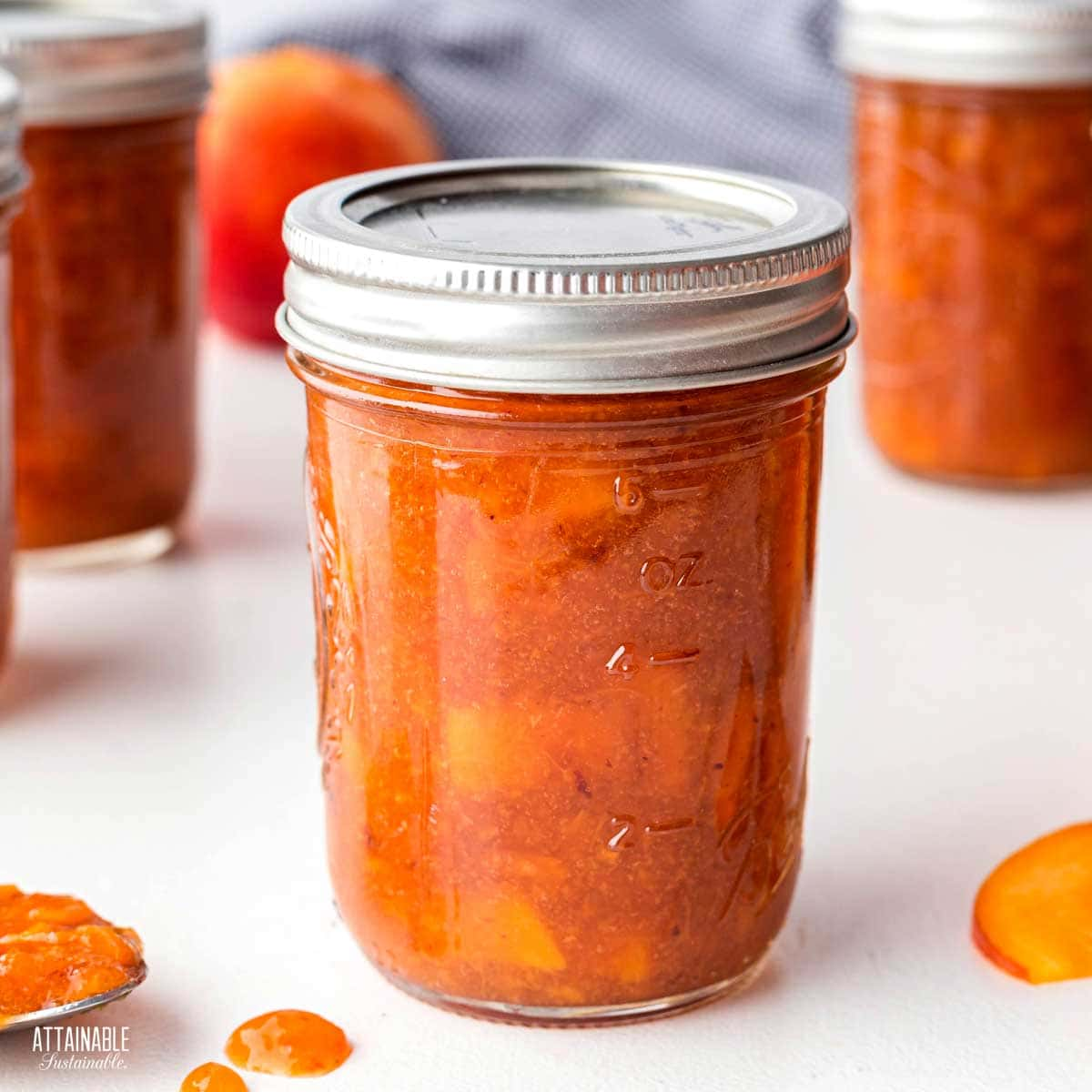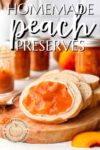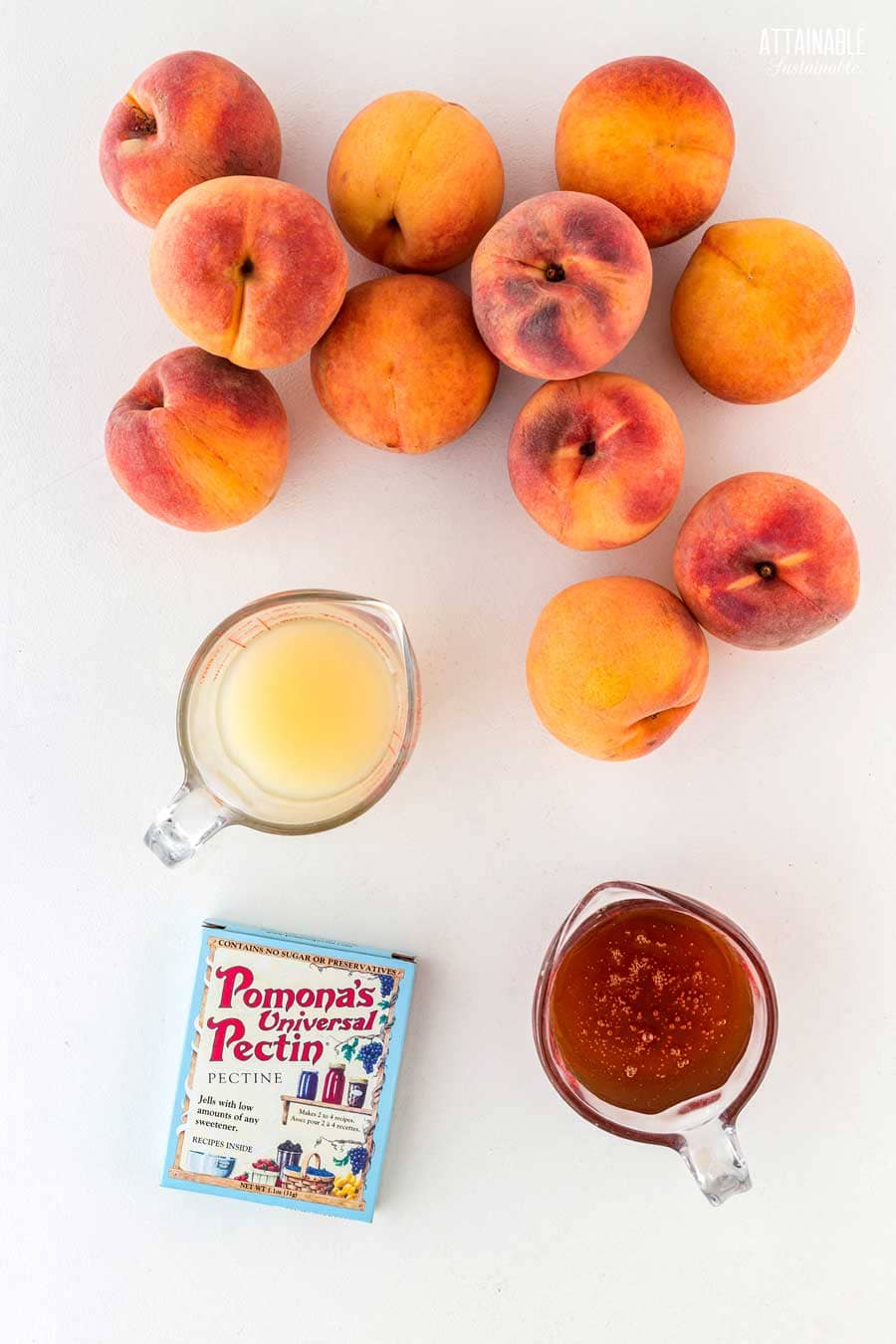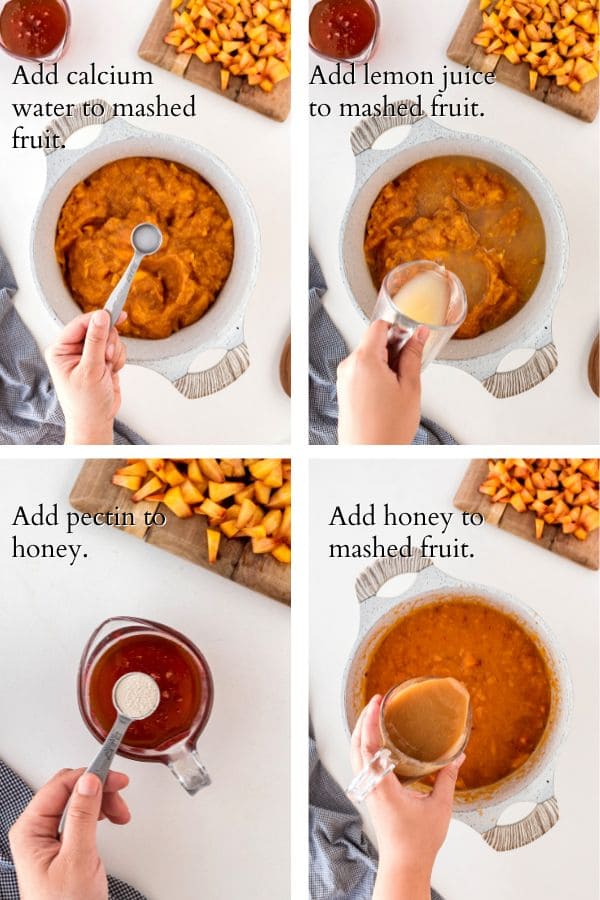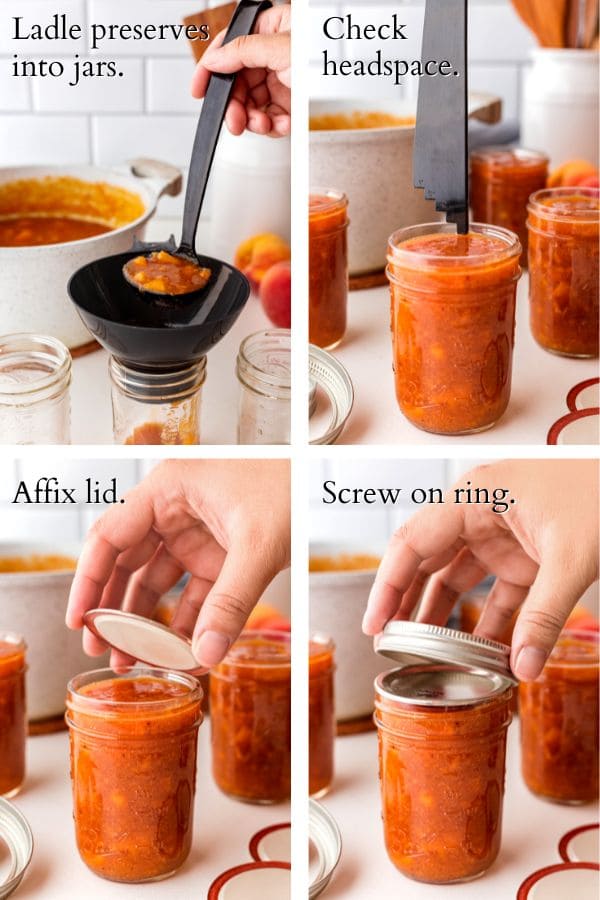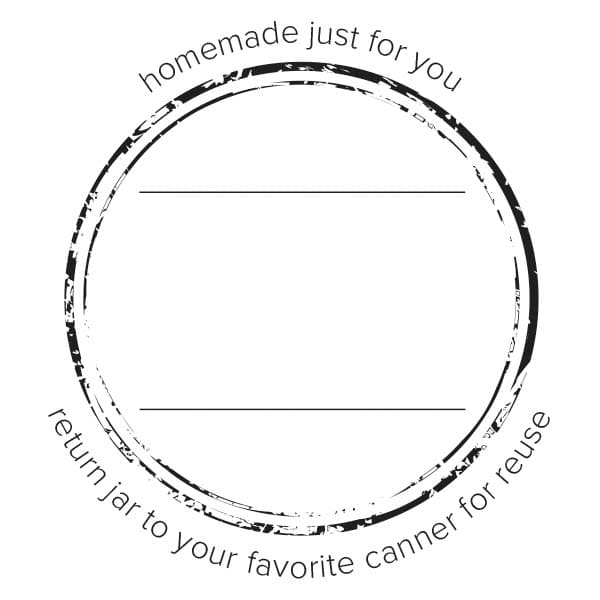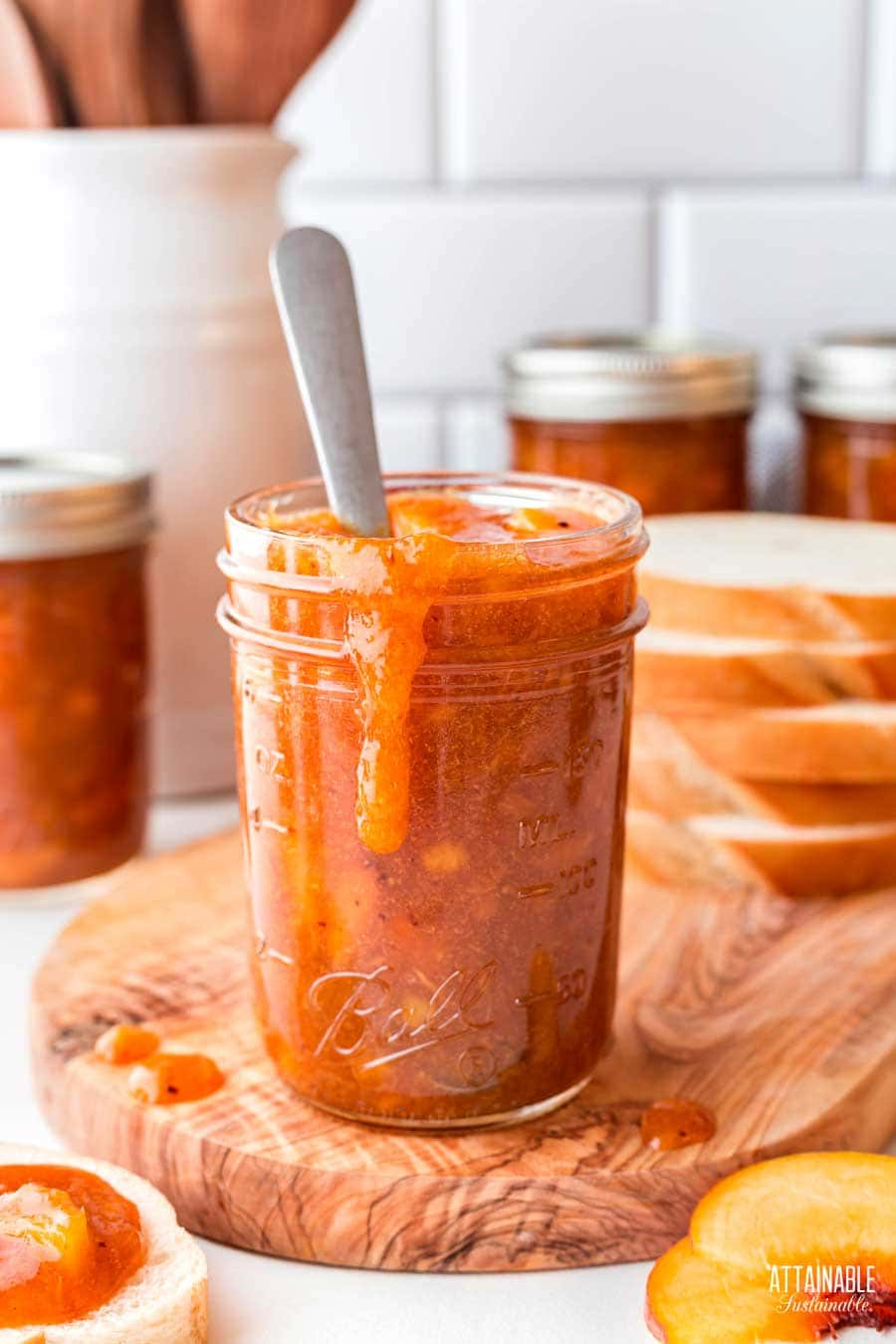When fresh peaches are in season, set aside an hour or so to make up a batch of preserves from sweet ripe peaches. Open up a jar in the middle of winter and the flavor will take you back to the dog days of summer.
Be sure to make this delicious cobbler during peach season, too!
I worked at my family’s farm stand every summer. Apples were the staple, as that’s what my dad grew. But nearby growers had peach trees, so we always brought in a bin or two of juicy peaches. The fruit is more fragile and has a shorter shelf life than apples, so it was a bit of a whirlwind couple of weeks. Our customers knew that they’d be available for just a short time and they waited for the sign to go up on the highway, alerting them that peaches were available.
These peaches were the O’Henry variety, and I’m not sure I’ve had a better peach since. They were always large and delicious. The fact that they are a freestone peach makes them easy to use in the kitchen, too, since the flesh breaks away from the pit easily.
You will love making these delicious peach preserves for the pantry.
Preserves vs. Jam
Let’s start by discussing the difference between peach jam and peach preserves. Both are delicious, to be sure. But preserves tend to have larger chunks of fruit and they are looser than jam.
5 Easy Steps to Transform Your Pantry!
Ready to switch from store bought to homemade? Let me help you make some changes! Grab my FREE five-part guide to getting started.
Do people mix the two up? Sure they do. The difference is minimal and if you want to call it homemade peach jam, you go right ahead.
Making Peach Preserves
This recipe comes complete with canning instructions so that you can make a shelf stable product for the pantry.
You can absolutely skip this step if you think that your family will use the preserves in a reasonable amount of time. Simply keep it in the fridge (it will last several weeks) and use it for spreading on your morning toast or topping ice cream.
Ingredients
Peaches – You’ll need 6-7 pounds of fresh fruit to make this recipe. Use any type of yellow peach that you have readily available. As mentioned above, a freestone variety will be easier to work with than a cling variety. (Read more about stone fruit.) Do not use white peaches for this recipe; these peaches are less acidic than the yellow variety and can alter the pH of the recipe making it unsafe for canning.
Sweetener – This recipe calls for using one cup of honey as the sweetener. Honey is sweeter than sugar, so you can use less. If you’d prefer to use sugar, use two cups of sugar.
Lemon juice: USDA preserving recipes all call for using bottled lemon juice. This assures that the acidity level in recipes is safe for canning.
Pectin – This recipe is made using Pomona’s Universal Pectin. This is the only pectin I use anymore as it allows me to use much less sweetener. The standard pectin brands use an obscene amount of sugar in my opinion, often requiring equal amounts of sugar and fruit! This product uses a low methoxyl method and calls for using two different ingredients, which are included in the box: pectin (the large packet) and calcium powder (the small packet). The dry pectin is mixed with the sweetener before being added to the fruit. The calcium water is added directly to the fruit.
The Handcrafted Pantry

Ready to DIY your pantry with more wholesome ingredients? Check out my ebook, The Handcrafted Pantry! Filled with delicious recipes for some of your favorite condiments, snacks, and toppings, it’s the guide you need to start skipping packaged products and embrace homemade.
Making the Preserves
Wash and dry the peaches. Dice enough into half-inch pieces to make two cups; set aside. Mash the remaining fruit using a potato masher. If you’d prefer to remove the fuzzy skins, here’s how to peel peaches using a blanching method.
Measure six cups of the mashed peaches into a large stockpot along with the lemon juice and calcium water.
Combine the pectin with the honey (or sugar, if you’re using that), making sure it’s thoroughly combined.
When the peach mixture reaches a full rolling boil, add the sweetener to cooking peaches, stirring for a minute or two to assure that the pectin is well distributed.
Stir in the two cups of reserved diced peaches, return to a boil, boil for one minute, and remove from heat.
This recipe measured at a pH under 3.5, putting it well into the “safe” zone for water bath canning.
🍅 Safety First!
Canning is an excellent way to preserve food for the pantry, but there are some important safety considerations to keep in mind. The recipes on this site have been made following safe canning procedures by a certified Master Food Preserver.
- Know the difference between water bath canning and pressure canning. Low acid items must be pressure canned for safety.
- Altering ingredients may change the recipe’s pH, posing a safety issue.
- Use the proper jars and lids. Never reuse lids, with the exception of the Tattler or Harvest Right hard plastic lids that are intended for such a purpose.
- For more on canning equipment, please go here.
- Want to learn more? The National Center for Home Food Preservation is the go-to resource for safe canning information.
Canning the Preserves
You’ll need special canning jars, lids, and rings to make this a shelf-stable product, but the process isn’t difficult.
Transfer hot jam into canning jars, leaving a quarter-inch headspace. Use a non-metallic knife or bubble tool to remove any air bubbles. Wipe the rims of the jars, removing any residue. Place the lids on and process them in a water bath canner. What this means is you’ll put the filled and sealed jars of jam into boiling water and heat them for ten minutes. This assures that the jars will seal well and kills off any potential bacteria in the jam mixture itself.
Use a jar lifter to remove the hot jars to a towel-covered countertop and allow to cool fully. As they cool, you’ll hear the little “tink” sound of the jars sealing. Store any unsealed jars in the fridge and use those first. (This is unusual, but it does happen once in awhile.)
Remove the ring from each sealed jar of peach preserves, rinse to remove any jam residue, and store (without the ring) at room temperature in a dark place such as the pantry. Opened jars should be kept refrigerated; they’ll last in the fridge for several weeks.

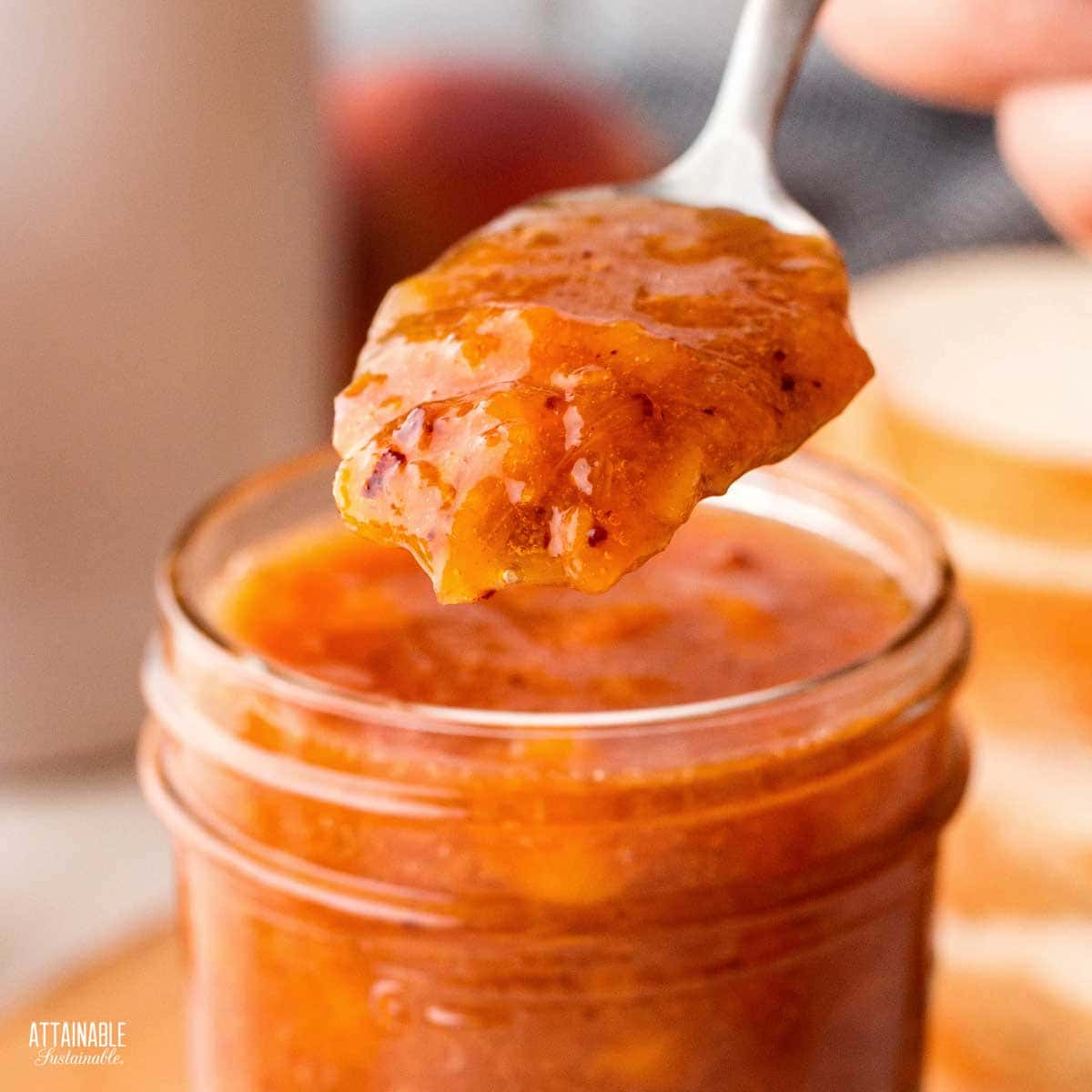
Peach Preserve Recipe
Ingredients
- 6 - 7 pounds peaches
- 8 teaspoons calcium water from the Pomona's Universal Pectin package
- ½ cup lemon juice bottled
- 1 cup honey
- 6 teaspoons pectin from the Pomona's Universal Pectin package
Instructions
Prepare for Canning
- Prepare the calcium water: Combine ½ teaspoon calcium powder (from the small packet in the box of Pomona’s pectin) with ½ cup water in a small jar. Screw on a lit and shake until well-combined. You'll have more than you need for this recipe. Store the excess in the refrigerator for use in making additional jam or jelly recipes.
- Wash the jars you'll use, making sure each is clean and free of nicks in the rim, which could impede sealing.
- Wash the lids and rings in hot soapy water. (If you're using non-Ball brand lids, prepare as suggested by manufacturer.)
- Place empty jars in a canning pot or large stock pot with enough water to cover by an inch or two, cover pot, and set on high heat. It can take awhile for the water to heat, so get it started before you begin making the recipe.
Make the preserves
- Wash and dry the peaches and dice enough unpeeled peaches into 1/2” pieces to make 2 cups; set aside.6 - 7 pounds peaches
- Mash remaining peaches coarsely with a potato masher until you have 6 cups; transfer to a large pot. Add the prepared calcium water and lemon juice; stir to combine well.8 teaspoons calcium water, 1/2 cup lemon juice
- In a separate bowl, combine the honey with the pectin powder (the large envelope) until thoroughly combined.1 cup honey, 6 teaspoons pectin
- Bring mashed peaches to a full boil. Add honey mixture, stirring vigorously for a couple of minutes to dissolve the pectin. Stir in diced peaches. Return to a full boil, boil for one minute, and remove from heat.
Canning peach preserves
- Remove the empty jars from the canner, draining the water back into the pot.
- Ladle hot preserves into half-pint jars to within a quarter inch of the rim. A canning funnel makes this easy.
- Wipe jar rims to remove any jam that may have spilled. A clean rim is essential to a good seal.
- Set jar lids in place. Screw bands on finger tight.
- Use a jar lifter to gently submerge jars into the hot water bath. Be sure to place a wire rack in the bottom of the pot to prevent the jars of peach jam from sitting directly on the bottom. Water should cover the top of the jars by an inch or two. The water will cool somewhat in reaction to the addition of the jars. Return the water to a low boil and then set the timer.
- Process in a boiling water bath for 10 minutes. Add a minute to the boiling time for every 1,000' above sea level.
- Check seals. Lids should be solid and pulled down tight. (if they flex and pop, the jar didn’t seal; put unsealed jars in the refrigerator and use those first).
- Remove rings and wash outsides of jars. Store in a cool, dry place.
Notes
- Boiling lids or heating above 180°F as once recommended can damage the sealing compound.
- This recipe is made using Pomona’s Universal Pectin. This is the only pectin I use anymore as it allows me to use much less sweetener. The standard pectin brands use an obscene amount of sugar in my opinion, often requiring equal amounts of sugar and fruit! This product uses a low methoxyl method and calls for using two different ingredients, which are included in the box: pectin (the large packet) and calcium powder (the small packet).
- This recipe calls for using one cup of honey as the sweetener. Honey is sweeter than sugar, so you can use less. If you’d prefer to use sugar, use two cups of sugar.
- Do not use white peaches for this recipe; these peaches are less acidic than the yellow variety and can alter the pH of the recipe making it unsafe for canning.
- SOURCE: Adapted from Pomona's Universal Pectin.
Nutrition
